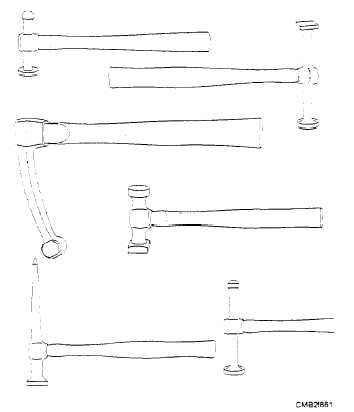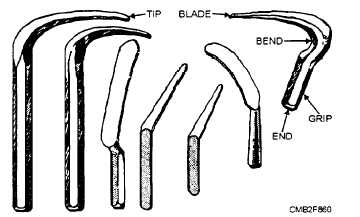For military vehicles, appearance is secondary. The Naval Facility Engineering Command (NAVFAC) who controls all Navy vehicles states that transportation equipment will be repainted when inadequate protection is afforded against rust and corrosion. It also states that spot painting should be used instead of complete painting unless necessary for protection of the entire vehicle.
Part of your job as a Construction Mechanic is to perform body maintenance of the vehicles assigned to your command. In order to perform this task, you must known the procedures used for straightening fenders and body panels. Preparation and painting of the vehicle is another important task associated with this responsibility.
BODY TOOLS
Regardless of whether the vehicle is in need of extensive bodywork or has a dented fender, it is desirable to have a number of special tools. One of the most important tools required to repair heavily damaged areas is a portable hydraulic jack (porta-power) (fig. 8-58). The porta-power is provided with a number of adapters or accessories that will allow you to use it in many types of body repair work. This tool when applied, as shown in figure 8-59, will force the damaged area to return to near original shape and save many hours of labor.
Spoons (fig. 8-60) dinging hammers (fig. 8-61) and dolly blocks (fig. 8-62) are the common working tools found in the body shop. These tools are used to remove dents and smooth out and shape damaged areas.

Figure 8-58. - Portable hydraulic jack.

Figure 8-61. - Dinging hammers used to remove dents.

Figure 8-59. - Pushing a body dent out using a portable hydraulic jack.

Figure 8-60. - Spoons used in the body repair shop.
Continue Reading